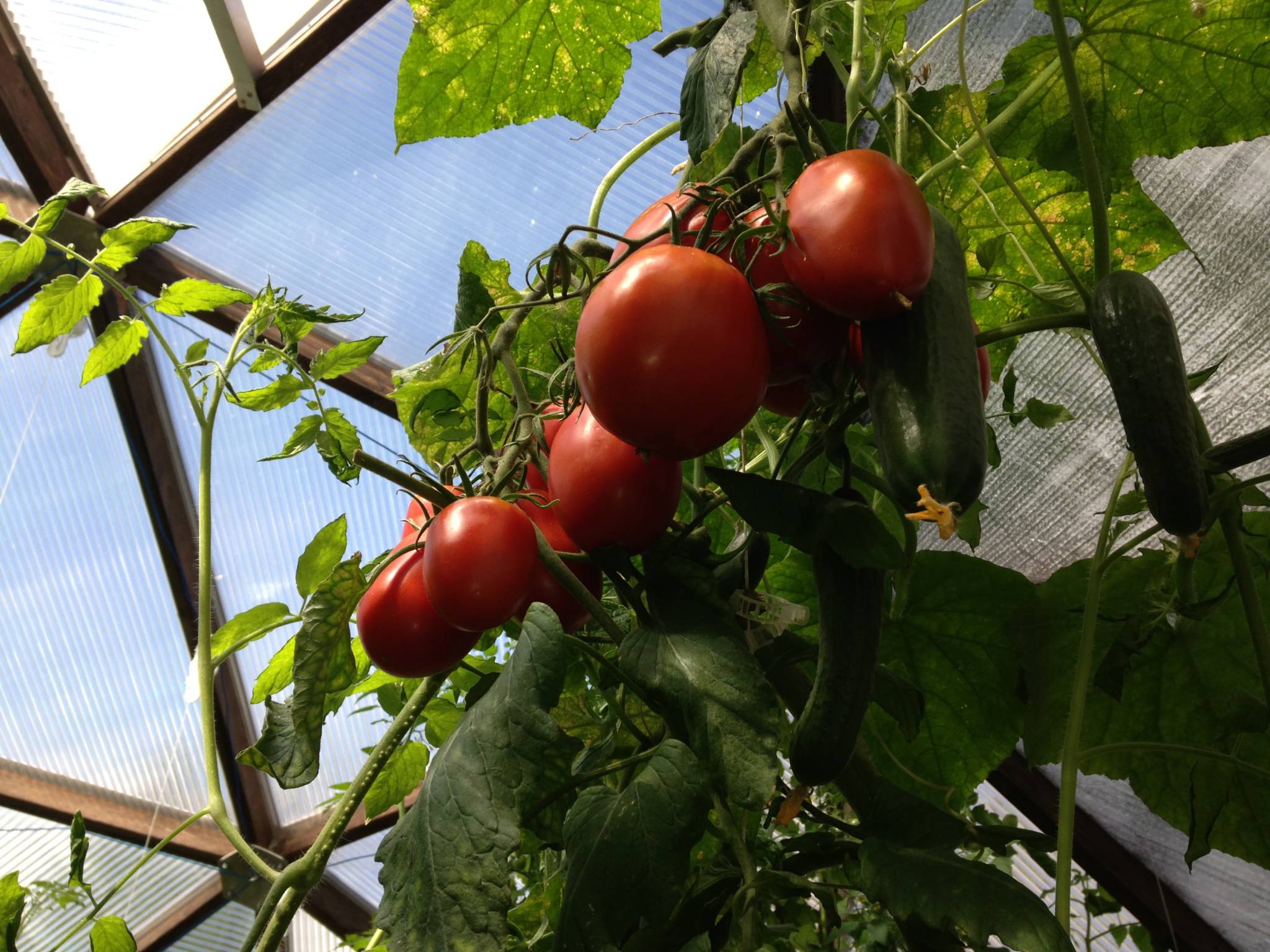
Growing dome grown tomatoes on a trellis adds shade to your dome greenhouse and provides fruit. Tomatoes are very happy growing on a trellis!
Family: Solanaceae
Botanical Name: Solanum lycopersicum
Common Name: Tomato
Plant Type: Annual, fruit
Zone: 3-11
Soil pH: Acidic, Slightly acidic to neutral
Size In an outdoor garden: 3-10 ft. tall, 1-3 ft. wide. Size In a dome: Larger!
- Want to Grow Fresh, Juicy Dome Grown Tomatoes?
- Best Location in a Dome Greenhouse
- Planting Your Tomato Plant
- Care of Your Dome Grown Tomatoes
- Companion Plants For Dome Grown Tomatoes
- Managing Pests
- Pruning Dome Grown Tomatoes
- Harvesting Tomatoes
- Tomato History
- Tomato Trivia
- Health Benefits of Dome Grown Tomatoes
Want to Grow Fresh, Juicy Dome Grown Tomatoes?
Freshly picked tomatoes are sweet and juicy and hard to resist. In this post, we will help you with all the information you need to grow beautiful, healthy tomatoes in your dome.
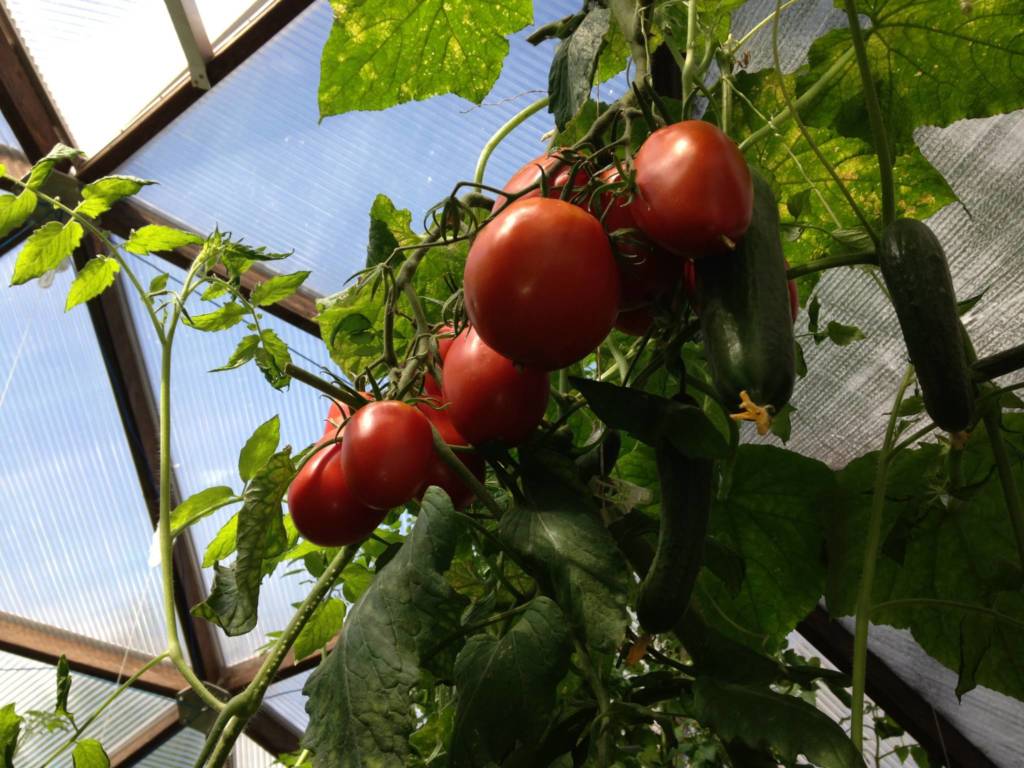
Determinate or indeterminate? You determine!
Determinate tomato plants mature, ripen early and grow typically to three to four feet in height. All the fruit ripens within about two weeks and the plant dies back. These types are best for container growing.
Indeterminate tomato plants continue growing after the fruit sets. The first frost will kill tomatoes. A tomato plant grown in a dome may keep going as it is warmer in the dome! Give your indeterminate tomato plants strong staking or trellising for them to grow on.
Best Location in a Dome Greenhouse
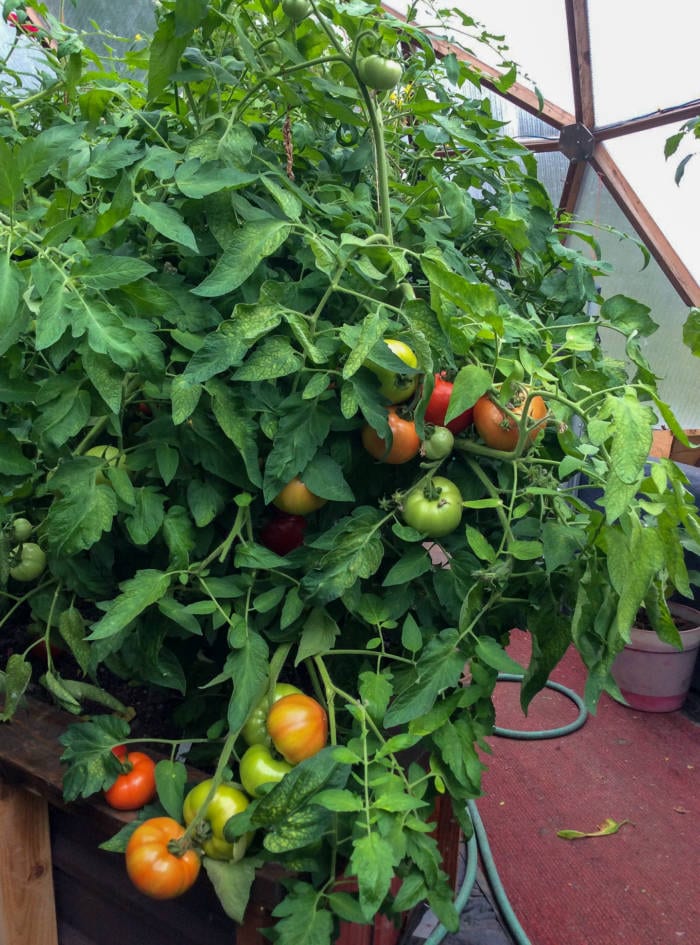
Tomatoes grow well in full sun and need 8-10 hours every day. With a long growing period needed, this is why a dome greenhouse in the Rocky Mountains is vital to your success. The best locations in a greenhouse dome are the south and west zones. Consider planting near the vents or in front of fans as they need air circulation to fight fungal infections. Consistent airflow will help the tomato plant grow a strong main stem to support all the delicious fruit! Don’t forget you can trellis your tomato plants and provide shade in your dome.
Planting Your Tomato Plant
Plant your tomato plants in loamy, well-draining soil with a soil temperature of 50 degrees or above. Tomatoes do not tolerate frost!
Start tomatoes from seeds 6-8 weeks ahead of your planting date. Learn more about growing tomatoes from seed.
Plant seedlings 24” to 36” apart. This allows room to grow and good air circulation. Crowded plants will limit sunlight and prevent tomatoes from ripening. Remember that indeterminate tomato plants will continue to grow and need space for that growth.
Plant your tomato seedlings with 2 ⁄ 3 of the stem buried in the soil or just below the healthy bottom leaves. Remove the bottom sets of leaves to create a longer stem. This method will give your plant more roots which will help it grow stronger with a bigger root system to absorb nutrients.
Remember to offer tomato plants cages or trellis systems for them to climb.
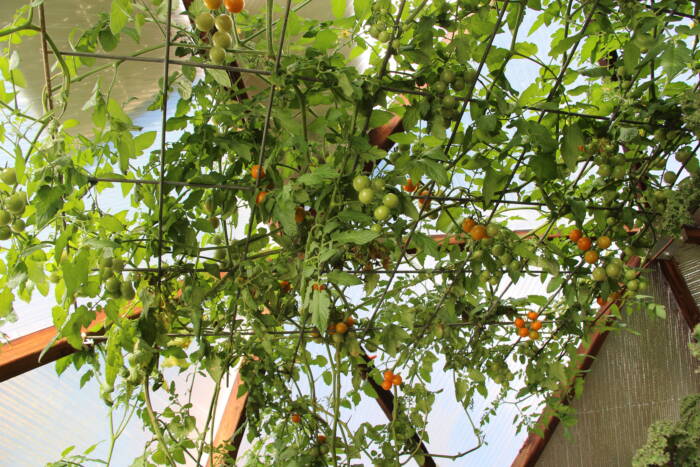
Care of Your Dome Grown Tomatoes
Soil: Tomatoes need rich, well-drained acidic or slightly acidic soil.
Water: Watering early in the morning helps them make it through the heat of the day. Avoid watering the leaves as this can lead to fungal infections. Water at the base and avoid splashing the leaves.
For seedlings, water generously for the first few days after planting. Switch to deep watering for a strong root system.
Fertilize: Perform a soil test to determine what the soil is lacking. Tomatoes are heavy feeders and will benefit from fertilizer at different times in the growth cycle.

Pro Tip: Avoid high-nitrogen fertilizers. If there is too much nitrogen in the soil the plant will produce lush foliage, but few flowers and no fruit. A better option is fertilizer with more phosphorus and less nitrogen.
Blossom end rot can be a common occurrence with tomatoes. It is a nutritional disorder caused by a lack of calcium uptake. Under-watering or overwatering will stress tomato plants. Utilizing the moisture meter that came with your Growing Dome kit will help to avoid this issue.
Temperature: Tomatoes like it warm, not too hot. The best air temperature is between 50 – 80 degrees. Soil temperature for tomatoes should be at least 50 degrees.
Pro Tip: Don’t forget to sing to your plants! John Denver appreciated homegrown tomatoes so much he wrote a song about them! Listen to Homegrown Tomatoes. (It should be Dome grown Tomatoes!) Favorite line: “All winter without ‘em is a culinary bummer…” You CAN have winter tomatoes in a Growing Dome greenhouse!
Companion Plants For Dome Grown Tomatoes
Hmmm, what tastes good with tomatoes? That’s one way to help pick companion plants for your tomato. Companion plants are a bonus to any garden! First, they attract pollinators and beneficial insects. They help retain moisture and offer weed control. Some companion plants add nutrients to the soil which can increase productivity.
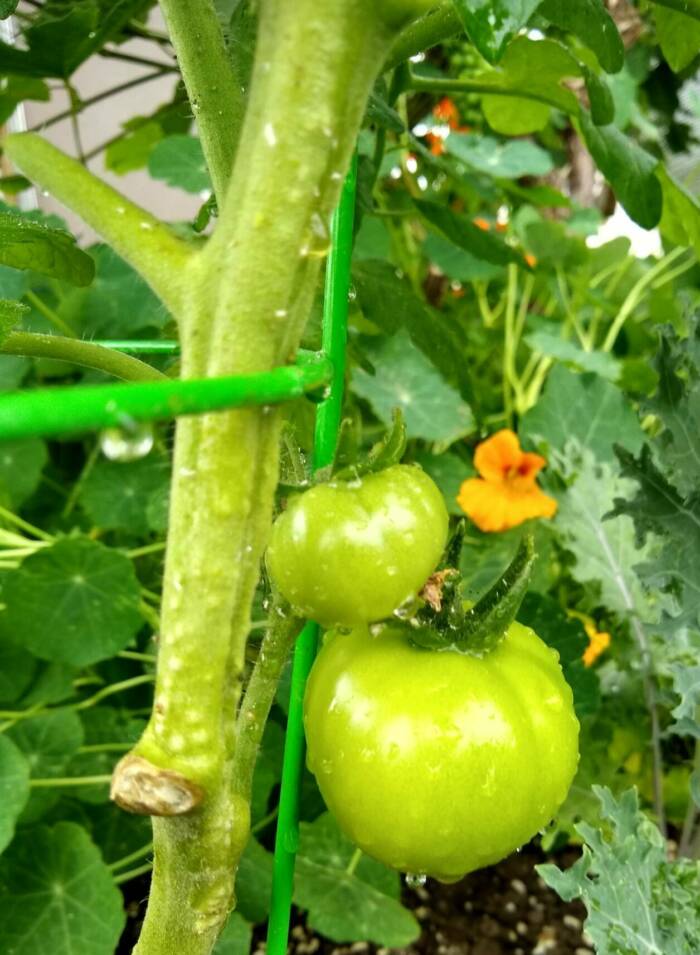
Here is a partial list of tomato companion plants:
Basil can help your tomato plant’s roots grow stronger, which helps with fruit development. Basil’s strong essential oil scent helps repel aphids, hornworms, and whiteflies.
Calendula has a musky fragrance that repels hornworms.
Cilantro/coriander has a secret weapon. Grow an extra plant, let it go to seed and it will attract parasitic wasps that feed on adult hornworms.
Nasturtium – Beautiful and edible, these flowers can be used to repel aphids and white flies. As a lovely ground cover, they help keep weed growth down and keep tomato roots cool.
Plants to avoid growing with tomatoes:
Brassica family (Broccoli, Brussels sprouts, cabbage, and more.) Avoid these plants as they can stunt the tomato plant’s growth. Do not plant them in close proximity.
Fennel and dill. Avoid these plants as they can stunt the tomato plant’s growth. Choose an area away from your tomatoes to grow fennel and dill.
Cucumbers, corn, and members of the nightshade family should not be planted near tomato plants as they share diseases and/or attract some of the same pests.
Managing Pests
Tomatoes are very attractive to pests and who can blame them? They are delicious. This is why companion plants are crucial! They help deter pests and attract beneficial insects and pollinators.
Some other important strategies are to plant disease-resistant varieties, practice crop rotation, water at the soil level—not on the leaves, pinch off tomato suckers, and provide enough space!
Planting too close together inhibits airflow and allows diseases to spread from plant to plant. Giving your tomato plants plenty of room will help avoid those issues.
Pruning Dome Grown Tomatoes
Tomatoes may require occasional pruning or pinching of suckers or shoots. These grow on indeterminate tomatoes between the main stem and the leaf branch. Pinch and remove suckers to help the plant direct energy towards flowering and fruiting.
Determinate varieties will develop stronger stems if you pinch off the suckers that grow below the first flower cluster.
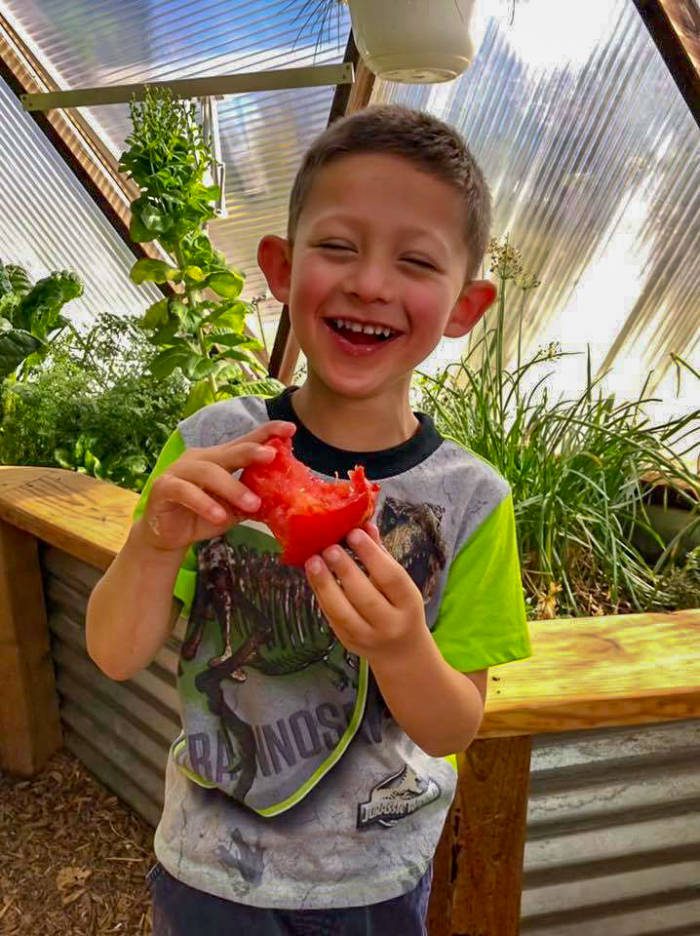
Harvesting Tomatoes
Tomatoes with a firm, shiny skin and a supple texture are ready to be harvested. Trim ripe tomatoes from the vine as pulling them may damage the plant.
If cool temperatures are coming, pick green tomatoes from the vine and let them ripen in a paper bag. Or use green tomato recipes!
Tomato History
Tomatoes originated in South America and grew wild in the Andes of western South America. The plants were cultivated and the seeds were taken to Mexico, then Spain.
Tomatoes are part of the nightshade family, which includes peppers, potatoes, tomatillos, and tobacco to name a few. All of the cultivated varieties of tomatoes come from just one species: Solanum lycopersicum. There are currently 16 varieties of wild tomatoes in South America.
In the 16th and 17th centuries, explorers brought domesticated tomatoes to Europe. Tomatoes were considered poisonous and people were afraid to eat them. It’s true; tomatoes were referred to as “poison apples.” Aristocrats were dying of lead poisoning and tomatoes were being blamed. Now we know that the pewter plates the wealthy owned had high contents of lead. Being acidic, tomatoes drew the lead out of the pewter, and people would die of lead poisoning.
Tomato Trivia
- Tomatoes are NOT always red! There are pink, yellow, white, black, and purple varieties.
- The English word “tomato” is derived from the Spanish word tomate, which came from the ancient Aztec language, Nahuatl. The Aztec name tomatl translated to “Plump thing with a navel.” Hey, I resemble that!
- Fresh Tomato Day is April 6 and if you grow your tomatoes in a Growing Spaces Dome, you could celebrate with a fresh tomato!
- Did you know there are tomato festivals around the world? If you want to be in a food fight, go to La Tomatino Festival in Spain. In August they bring fresh tomatoes to the town of Bunol for a huge tomato fight. Dress wisely and bring goggles!
- In 2016 the largest single tomato plant grew past the previous record holder. At Walt Disney World Resort, Florida, this single tomato plant covered an area of 56.73 meters sq. That is huge!
- Did you know Heinz Tomato Ketchup has a speed limit? If the yummy sauce pours at more than 0.028mph when it’s in the factory, it’s considered too runny and rejected!
- What did Arnold Schwarzenegger say to his tomato seeds after watering them for the first time? You’ve been germinated.
Anyways, if you want to help me grow tomatoes, I’m vine with it.
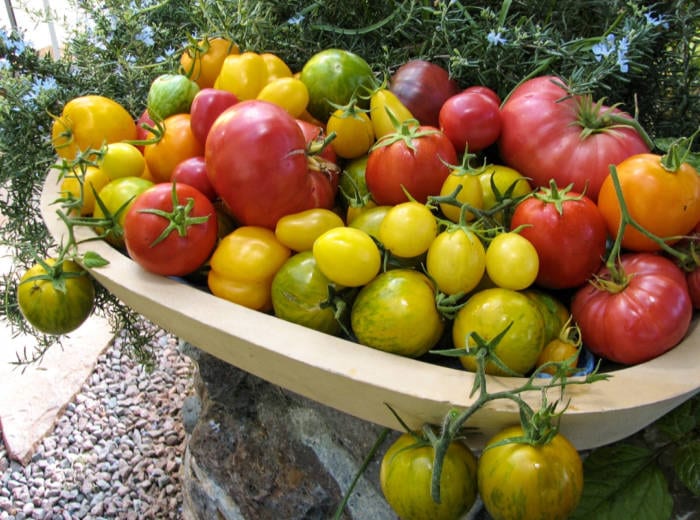
Health Benefits of Dome Grown Tomatoes
Tomatoes are the number one plant grown in home gardens in the US. Well, they are delicious straight off the vine! Did you know just one tomato gives you about 40% of your daily vitamin C? Some of the other benefits are vitamin K, potassium, lutein, beta carotene, and an antioxidant called lycopene.
Lycopene gives tomatoes that luscious red color and protects them from the ultraviolet rays of the sun. Lycopene is good for your eyes as it helps support vision and fights against cataracts and macular degeneration.
Scientists believe combining tomato paste and olive oil protects your skin from sun damage. No, you don’t apply it to your skin, it’s from ingesting those ingredients! Lycopene is at its highest concentration in cooked tomatoes. Adding olive oil helps your body absorb the lycopene into your bloodstream.
Fluid and fiber are wonderful attributes of the tomato. According to the USDA one large tomato contains about 6 ounces of fluid and 1.5 grams of fiber. Note: Some people have challenges with the acidity of cooked tomatoes, which can trigger or worsen acid reflux.
Looking for new tomato recipes? There are a plethora of tomato recipes, here’s one of our favorites: Fresh Tomato Bruschetta or try this new amazing recipe for Vegan tacos!
Do you love tomatoes? Plant some tomato plants in your dome! You can look forward to enjoying tomatoes in your salads, salsa, pasta sauce, and trellis your plants for shade in summer.

